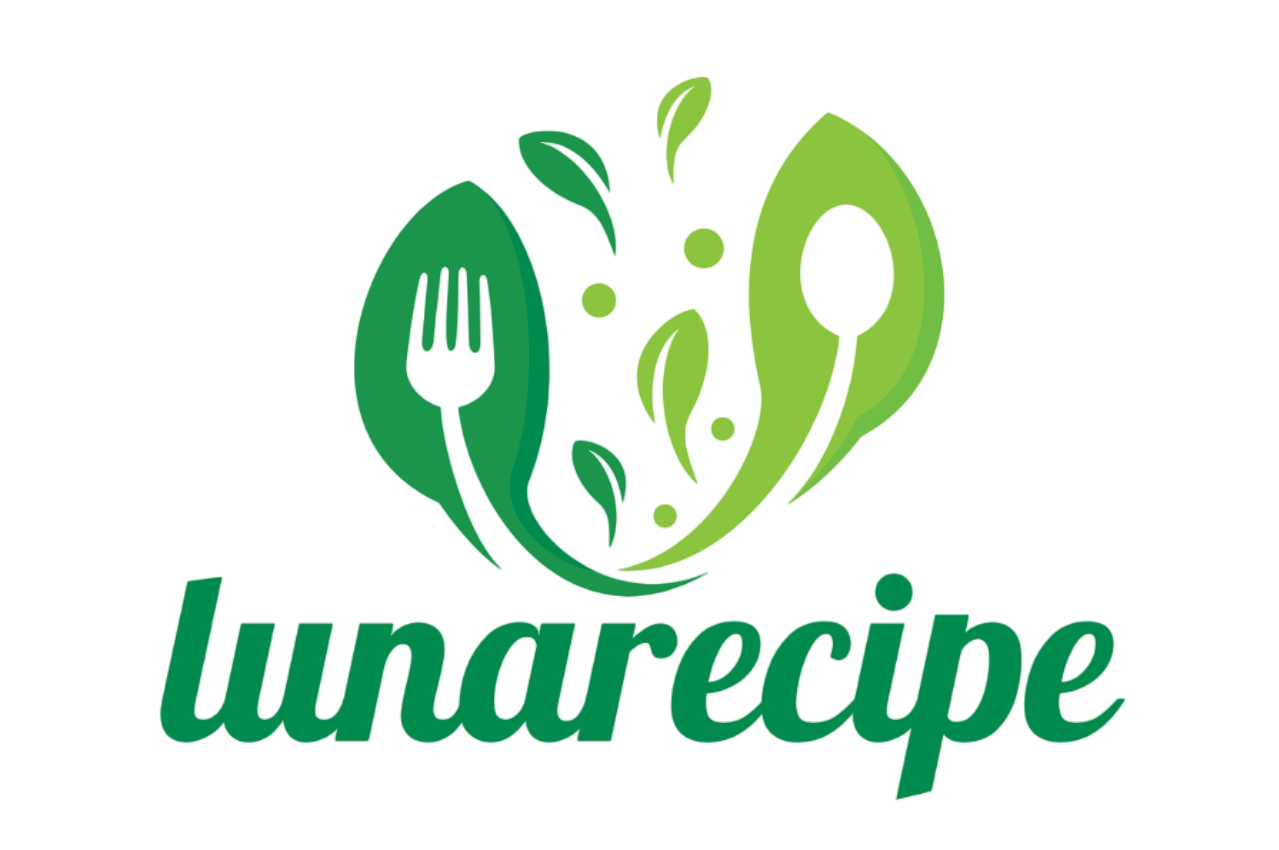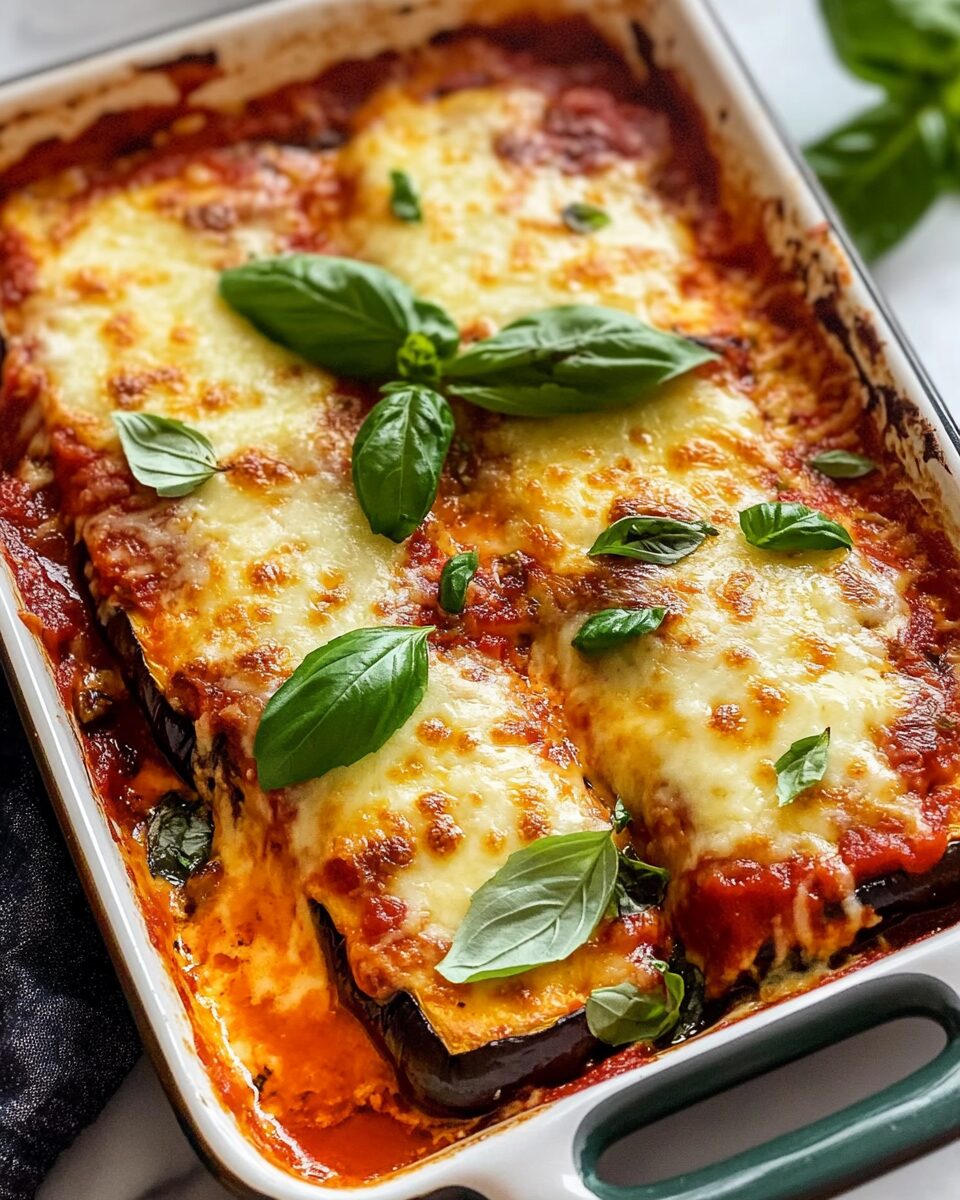Eggplant Parmigiana, a southern Italian classic, combines tender layers of baked eggplant with a rich, savory tomato sauce, fresh basil, and molten mozzarella. It’s a vegetarian dish that delights even the most dedicated meat lovers with its comforting, cheesy goodness. The perfectly baked eggplant slices soak up the tangy tomato sauce, while the fresh basil adds a pop of flavor in every bite.
This hearty dish is perfect for family dinners or special gatherings. The best part? You can make it ahead of time and bake it right before serving, making it an easy yet impressive option for entertaining. Serve it with a simple green salad for a balanced and delicious meal!
Full Recipe:
- 4 to 5 large eggplants (1.8kg/3.6lbs), sliced lengthways into 8mm (⅓”) thick slices
- 1/4 cup olive oil (for brushing)
- 600ml tomato passata
- 400g canned tomatoes, crushed or finely chopped
- 1 onion, finely diced
- 5 garlic cloves, finely minced
- 1 1/2 tbsp fresh oregano, finely chopped (or 1/2 tsp dried oregano)
- 1 1/2 tsp white sugar
- 1 2/3 cups parmesan, finely grated
- 2 cups fresh basil leaves (loosely packed)
- 1 1/2 cups mozzarella, shredded
- Salt and pepper to taste
- 1 cup water
Directions:
- Preheat oven to 220°C (430°F). Line three large trays with parchment paper.
- Brush eggplant slices on both sides with olive oil and arrange in a single layer on trays. Bake for 35-45 minutes until golden and tender, turning halfway through. Let cool.
- For the tomato sauce, heat 2 tbsp olive oil in a skillet over medium-high heat. Sauté onion and garlic for 3 minutes until soft. Add passata, crushed tomatoes, water, oregano, sugar, salt, and pepper. Simmer for 30-40 minutes until thickened.
- Reduce oven temperature to 180°C (350°F).
- In a 23x33cm (9×13″) baking dish, spread a little sauce at the bottom. Layer 1/3 of the eggplant slices, then 1/3 of the sauce, 1/3 of the parmesan, 1/3 of the basil leaves. Repeat layers two more times.
- Top with all mozzarella and the remaining parmesan. Bake for 25 minutes until golden and bubbly. Garnish with fresh basil.
- Let rest for 5-10 minutes before serving.
Prep Time: 25 minutes | Cooking Time: 70 minutes | Total Time: 95 minutes
Kcal: 352 kcal per serving | Servings: 8-10
The Rich History of Eggplant Parmigiana
Eggplant Parmigiana, known as Parmigiana di Melanzane in Italian, is a timeless dish that has graced dinner tables in Italy and around the world for generations. While its origin is rooted in the southern regions of Italy, particularly in Campania and Sicily, its appeal has spread far beyond Italy’s borders.
Interestingly, there is some debate about the dish’s name. Despite being called “Parmigiana,” which implies a connection to Parma in northern Italy, the dish itself comes from southern Italy. The term “Parmigiana” may refer to the use of Parmigiano-Reggiano cheese or to the Sicilian word “parmiciana,” which describes the wooden slats of a shutter, symbolizing the layered arrangement of eggplant slices in the dish.
In many ways, Eggplant Parmigiana is Italy’s answer to other classic layered baked dishes like lasagna and moussaka. It boasts many of the same comforting qualities, such as tender vegetables, tangy tomato sauce, and plenty of melted cheese, making it a favorite among vegetarians and meat-eaters alike.
Cultural Importance of Eggplant Parmigiana
Eggplant Parmigiana holds a special place in Italian cuisine, particularly in southern Italian households. It’s a dish that evokes memories of family gatherings, Sunday lunches, and celebrations. The recipe has been passed down through generations, with each family adding its own personal touch. Some add different herbs or cheeses, while others might tweak the preparation method, but the essence of the dish remains unchanged: a rich, flavorful, and satisfying meal.
Not only does Eggplant Parmigiana embody the simplicity and elegance of Italian peasant cooking, but it also showcases the country’s mastery of vegetables. Eggplant is often considered a humble vegetable, but in this dish, it transforms into a star ingredient, thanks to the balance of tomatoes, cheese, and basil that complements its slightly earthy flavor.
What Makes Eggplant Parmigiana Unique?
Eggplant Parmigiana is often compared to Eggplant Parmesan, its American counterpart, but the Italian version has its own distinct charm. While the American adaptation typically involves breading and deep-frying the eggplant slices, the traditional Italian version is lighter and healthier, with the eggplant slices baked rather than fried.
Here are some key elements that make traditional Eggplant Parmigiana stand out:
- Layering of thinly sliced eggplant: The eggplant is sliced lengthwise, which allows for better layering in the casserole dish. This method ensures every bite has a perfect ratio of eggplant, sauce, cheese, and basil.
- Use of tomato passata: The sauce for Eggplant Parmigiana is often made using tomato passata, a smooth and thick tomato puree, instead of chunky tomatoes. This gives the dish a richer, more velvety texture and avoids excess liquid that could make the layers soggy.
- Parmesan and mozzarella combination: The interplay of parmesan and mozzarella provides both savory depth and a gooey, melty finish that makes the dish irresistible.
- Basil in every layer: Fresh basil is layered between the eggplant slices, infusing the entire dish with its aromatic fragrance.
- No need for breading: Unlike some modern variations, traditional Eggplant Parmigiana doesn’t rely on breading the eggplant. This results in a lighter dish that still manages to be hearty and satisfying without unnecessary heaviness.
Variations and Regional Twists
Though the classic Eggplant Parmigiana recipe remains consistent across Italy, several regions and chefs have adapted it to suit local ingredients and preferences. Here are some common variations of the dish:
- Adding other vegetables: Some cooks like to add layers of other vegetables, such as zucchini or potatoes, to bulk up the dish and add more flavors and textures.
- Substituting different cheeses: While parmesan and mozzarella are the traditional choices, some regions use pecorino for a sharper taste or add ricotta for a creamier layer.
- Vegan Eggplant Parmigiana: With the rise in veganism, many cooks have created plant-based versions of Eggplant Parmigiana. These typically use vegan cheeses or nut-based cheese alternatives and skip any dairy-based ingredients, yet they still retain the essence of the classic dish.
- Breading the eggplant: Although this deviates from tradition, some cooks prefer to bread and fry the eggplant slices before layering them in the dish. This creates a crispier texture, though it makes the dish heavier and more caloric.
Health Benefits of Eggplant Parmigiana
Eggplant Parmigiana is not only a delicious and comforting dish but also a surprisingly healthy one, particularly when baked rather than fried. Here are some of the health benefits of the key ingredients in Eggplant Parmigiana:
- Eggplant: Eggplants are rich in fiber, which supports digestion and helps maintain healthy cholesterol levels. They also contain important antioxidants like nasunin, which has been linked to cognitive health, and chlorogenic acid, which has anti-inflammatory properties.
- Tomatoes: The tomato sauce in Eggplant Parmigiana provides a good dose of lycopene, an antioxidant that has been linked to reduced risk of heart disease and certain cancers. Tomatoes are also high in vitamin C, which supports immune function.
- Basil: Fresh basil adds a burst of flavor as well as health benefits. Basil is packed with anti-inflammatory compounds and has been shown to have potential benefits for reducing oxidative stress.
- Cheese: While cheese is often considered indulgent, it is also a good source of calcium and protein. Moderation is key, and Eggplant Parmigiana strikes a nice balance by using just the right amount of cheese to enhance the dish without overwhelming it.
Tips for Preparing Perfect Eggplant Parmigiana
Making Eggplant Parmigiana may seem daunting, but with a few tips, you can achieve a perfect, restaurant-quality dish every time:
- Choose the right eggplants: Look for firm eggplants with smooth, shiny skin and no blemishes. The fresher the eggplant, the better it will taste in your dish.
- Don’t skip baking the eggplant: Even though frying the eggplant may seem tempting, baking the slices ensures they remain light and less greasy. Plus, you avoid the extra calories that come with frying.
- Use fresh herbs: Fresh basil is key to this dish’s flavor. Avoid using dried herbs, as they don’t provide the same vibrant taste.
- Make ahead: Eggplant Parmigiana is a great dish to prepare in advance. You can assemble it a day before and refrigerate it, then simply pop it in the oven when you’re ready to serve.
- Rest before slicing: Let the dish rest for at least 5-10 minutes before slicing. This allows it to set and makes it easier to serve neat portions.
How to Serve Eggplant Parmigiana
Eggplant Parmigiana is a versatile dish that can be served in various ways, depending on the occasion:
- Main course: Serve Eggplant Parmigiana as a main course with a simple green salad or a side of crusty bread to soak up the delicious tomato sauce.
- Side dish: You can also serve it as a side dish alongside a roast chicken or grilled meats for a more elaborate meal.
- Brunch option: Eggplant Parmigiana can make an excellent brunch dish when paired with poached eggs or sautéed greens.
- Potluck or family gathering: Since it’s easy to make in large batches, Eggplant Parmigiana is perfect for potlucks or family gatherings. You can assemble it in advance, making it a stress-free dish to bring to any occasion.
Conclusion
Eggplant Parmigiana is a classic Italian dish that continues to delight people around the world with its perfect balance of flavors and textures. Whether you’re making it for a family dinner, a gathering with friends, or simply to enjoy comfort food at its best, this dish delivers on all fronts. With its baked eggplant, rich tomato sauce, and layers of cheese, it’s a hearty, satisfying, and surprisingly healthy option that never fails to impress.
By following a few simple tips and perhaps experimenting with regional variations, you can make Eggplant Parmigiana a staple in your home cooking repertoire. It’s a dish that truly represents the heart of Italian cuisine, bringing together simple ingredients to create something extraordinary.






